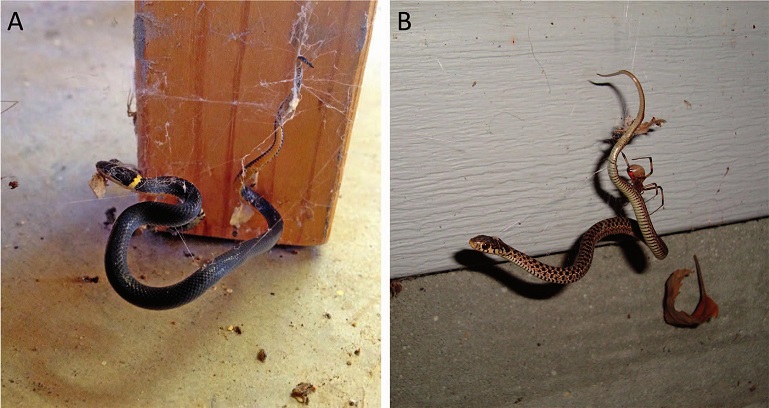Snakes are occasionally overpowered and eaten by a limited number of spider taxa. Not all snake-eating spiders trap the serpents with webs. Tarantulas actively hunt their prey, then use powerful jaws to deliver a potent venom (SN: 2/28/19). Often a tarantula tries to catch the snake by the head and will hold on in spite of all efforts of the snake to shake him off.
Once that venom takes effect, the snake calms down. In some encounters, venom defeated snakes in minutes. In others, spiders took days to kill their prey. Once the snakes die, spiders use enzymes to turn soft body parts into a soup that the arachnids suck into their stomach.
The snakes known as prey of spiders had an average body length of 25.9 ± 1.3 cm (median = 27 cm; range: 5.8–100 cm; n = 104). The vast majority of snake victims were either neonates or juveniles. The smallest snakes captured by spiders (i.e., juvenile typhlopids) are known to weigh only 0.2–0.7 g. Younger snake individuals are probably more vulnerable to predators than adults due to their small size. But on the other hand, in rare cases larger colubrids and vipers captured by spiders were fairly heavy, reaching an estimated body weight of up to 40–60 g (see subsection 3.6). The vast majority of snakes killed by spiders are terrestrial, with some exceptions.
Source: Nyffeler et al., 2021. The Journal of Arachnology. Vol. 49 (1), 11, 2021. doi: 10.1636/JoA-S-20-050.
